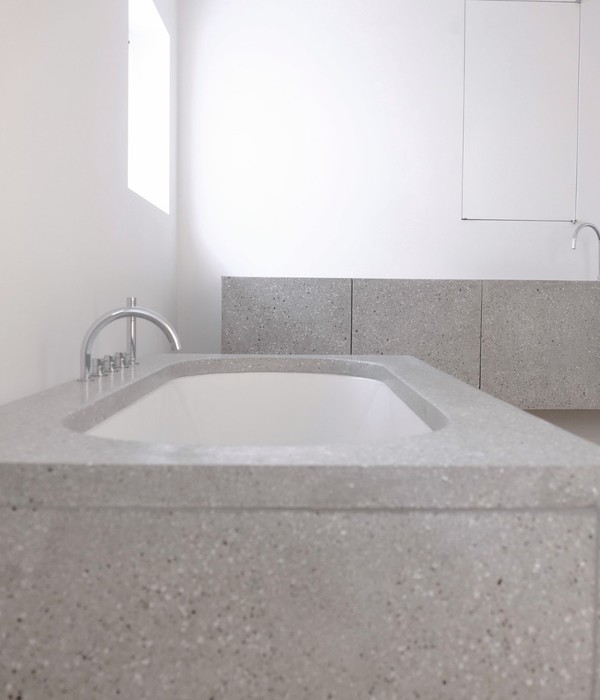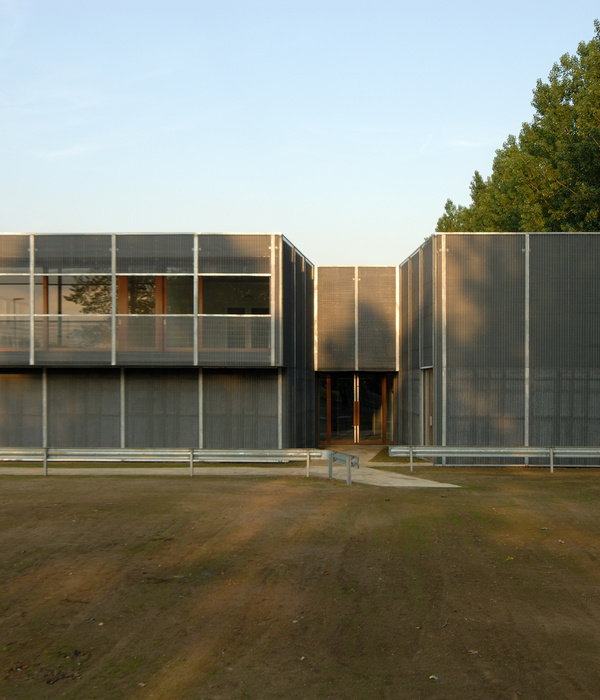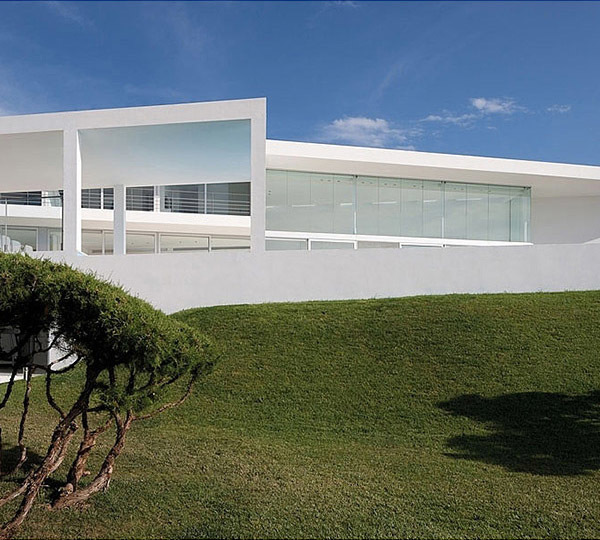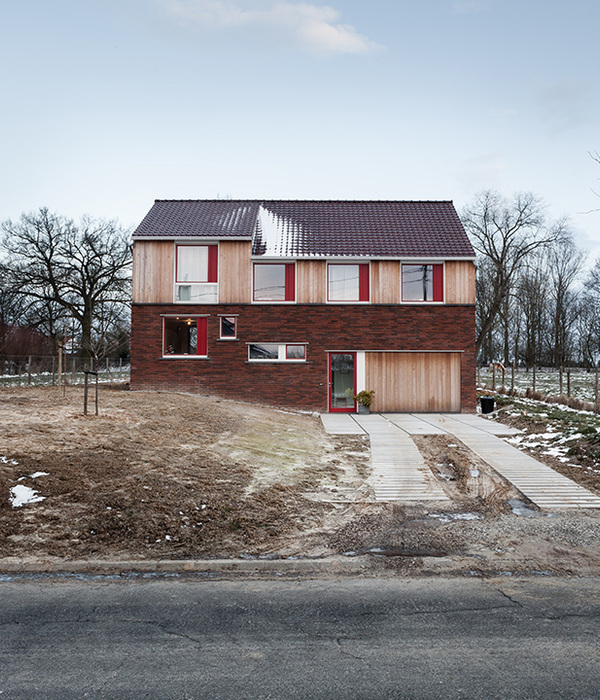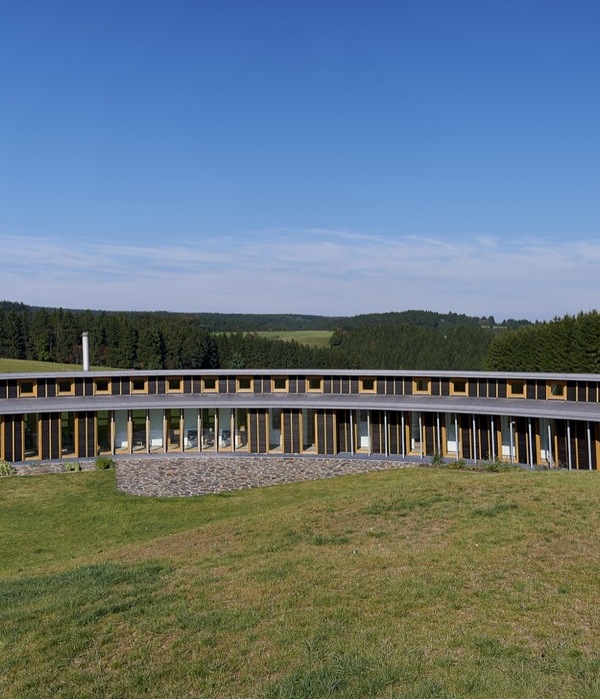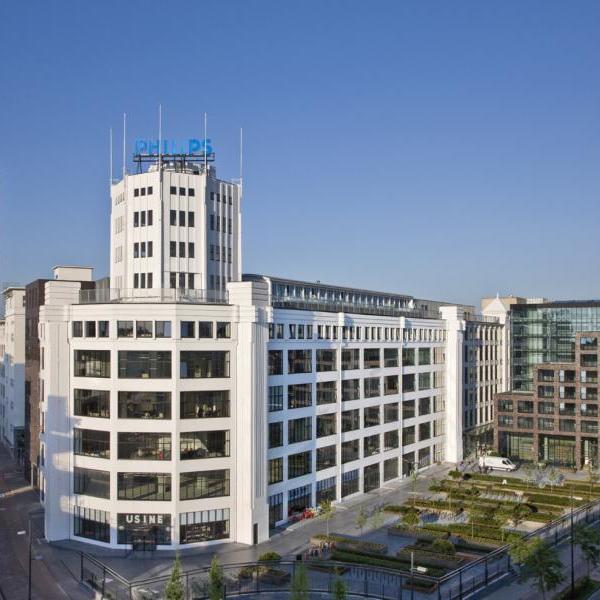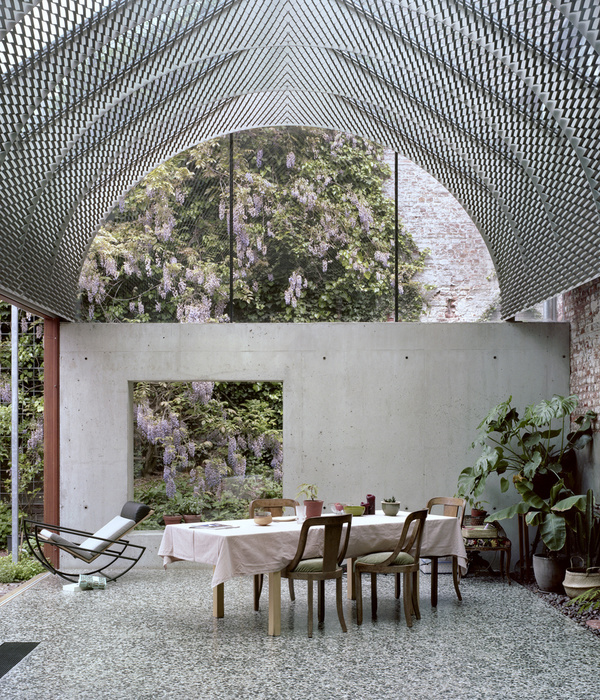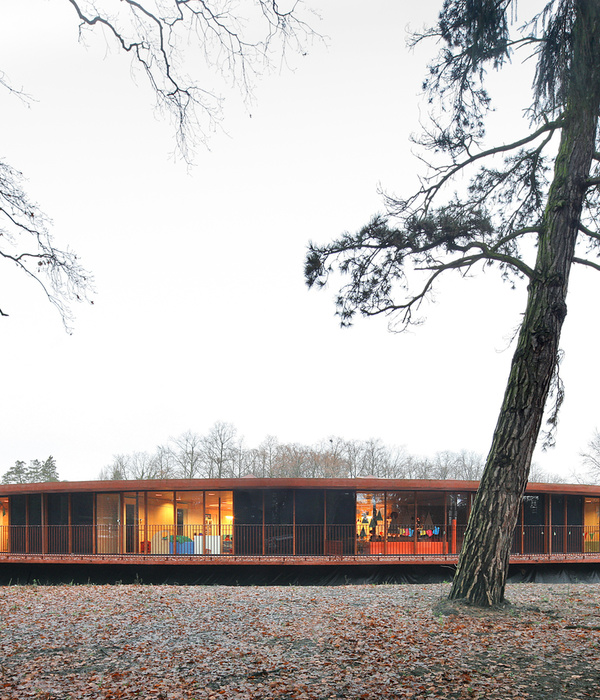“Bait Al Sharq”, which means “House of the East”, is a project rooted to its region. “Bait Al Sharq”的意思是“东方之家”,这是一个植根于其区域的项目。
The brief was to create a project that represents the client’s family to the public but also providing a private escape and get-together environment in a unique contemporary home atmosphere. This brief was to be combined with the mission to investigate all aspects of regional architecture. A project that authentically addresses its context and incorporates both means from the traditional to the technological. 简要的目的是创建一个项目,它代表客户的家庭到公众,而且在一个独特的当代家庭氛围中提供一个私人的逃离和聚会环境。该简报将与特派团结合,以调查区域架构的所有方面。一个真实地解决其上下文并将这两种方法与传统技术结合在一起的项目。
This project, developed in close collaboration with Vladimir Djurovic Landscape Architecture, benchmarked an ambitious level: Landscape and Architecture working together to create a sustainable regional project that protects the inhabitants from the harsh environment but reflects at the same time all the sensual subtleties of the “Garden of Paradise”. The design process from phase 1 to phase 2 illustrates the investigation of the design team and the client about the elements that define the habitat of the people living in the middle east . Where phase 1 combines in one abstract contemporary way the evident sculptural values of the traditional regional architecture with the history and sensuality expressed in the Islamic garden, phase 2 combines these elements and reflects on them by investigation about the essence, a layer deeper down in the regional way of life. 这一项目是与Vladimir Djurovic风景园林密切合作制定的,其基准是一个雄心勃勃的水平:景观和建筑共同努力,创建一个可持续的区域项目,保护居民免受恶劣环境的影响,但同时也反映出“天堂花园”的所有感官微妙之处。从第一阶段到第二阶段的设计过程说明了设计团队和客户对确定居住在中东的人的栖息地的要素的调查。第一阶段以一种抽象的当代方式将传统地域建筑的明显雕塑价值与伊斯兰花园所表达的历史和感官相结合,而第二阶段则将这些元素结合起来,通过对本质的考察来反思它们,这是一层更深层次的地域生活方式。
Landscape and architecture melt in one intention, one expression, one materialization. Landscape defines sensorial experiences and particular spaces, while architecture generates scale, atmosphere and protection. A fusion of elements with the ambition of creating one exclusive and distinctive feeling of “home” that offers a range of experiences, a contemporary gesture where tradition, local culture and identity are visible and reinterpreted. 景观与建筑融于一体,一种表达,一种物化。景观定义了感官体验和特定空间,而建筑则产生规模、氛围和保护。一种元素与创造一种独特的“家”感觉的雄心的融合,这种感觉提供了一系列的体验,这是一种当代的姿态,在这种姿态下,传统、地方文化和身份被可见并被重新诠释。
Long and vertical architectural elements of stone are placed at east/west direction in order to protect and benefit from both harsh sun and beneficial winds and to allow the landscape to flow in between the different levels. Different landscape elements or types of garden provide the different experiences but also organise the adequate hierarchy between the spaces, uses and program needs. The display of the stone masses creates flows, spatiality and visual connections in one open plan conception where the border line between architecture, space and landscape can no longer be strictly identified. 长而垂直的石头建筑元素被放置在东西向,以保护和受益于严酷的太阳和有利的风,并允许景观在不同的层次之间流动。不同的园林景观元素或类型提供了不同的体验,但也组织了适当的层次空间,用途和规划的需要。石质的展示创造了流动,空间和视觉联系在一个开放的平面概念,在建筑,空间和景观之间的边界不能再被严格识别。
In contrast with the protective and solidity expression of the wall elements that are materialized in warm and soft Syrian stone, a triple layered roof structure in both opaque and perforated thin bronze panels completes the global expression of the project. This thin and delicate extended canopy not only provides the adequate sun protection, through a dramatic dimming of natural light, but also generates a visual framing of the surrounding vegetation. Emphasizing the regional dimension of the project, the main landscaped areas around the project express a desert scenery of indigenous trees, acacias Arabica and crushed gravel paths. This harsh sustainable approach evolves gradually into one central lush green oasis at lower ground floor. Full of fruit trees, palms trees, water features and shadowed spaces this central area establishes the main outdoor living experience for the family. 与在叙利亚温暖和柔软的石材中物化的墙元素的保护和坚固表现不同,不透明和穿孔薄青铜板的三层屋顶结构完成了该项目的全球表达。这种细长而细腻的天篷不仅通过戏剧性的自然光变暗来提供充足的防晒,而且还产生了周围植被的视觉框架。在强调项目的区域层面的同时,项目周围的主要景观区域展现了土著树木、阿拉伯橡树和碎石小径的沙漠风光。这种严酷的可持续发展方式逐渐演变为底层一片郁郁葱葱的中心绿洲。这个中心地区充满了果树、棕榈树、水景和阴影空间,为家庭提供了主要的户外生活体验。
The functional program’s main elements to be identified in the architectural project are the Majlis, the main villa and tree family villas. The Majlis represents the family, a formal place to meet and welcome special guests at the main property’s formal access. The living quarters of the 4 villas, separated from the public life in the Majlis, are placed around the central oasis, the heart of the composition, a common central area and private garden at lower ground floor level with special leisure facilities that provide a unique indoor and outdoor living experience, the central place of the project where the family can meet away from all formal aspects of public life. 在建筑项目中要确定的功能程序的主要要素是Majlis,主要别墅和树族别墅。议会代表家庭,是在主要财产的正式出入处会见和欢迎特别客人的正式场所。这4座别墅的生活区与议会的公共生活相分离,位于中央绿洲周围,构成中心,有一个公共中心区和底层的私人花园,有特殊的休闲设施,提供独特的室内和室外生活体验,是项目的中心,家庭可以在这里聚会,远离公共生活的所有正式方面。Vincent Van Duysen Architects Vladimir Djurovic Landscape Architecture 文森特·范·杜森建筑师弗拉基米尔·朱洛维奇风景园林In collaboration with: 与以下人员协作:Vladimir Djurovic 弗拉基米尔·朱罗维奇
{{item.text_origin}}

